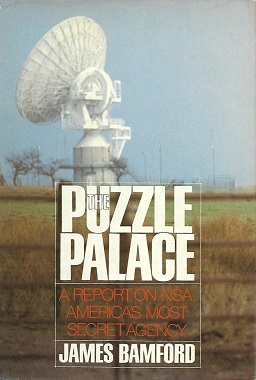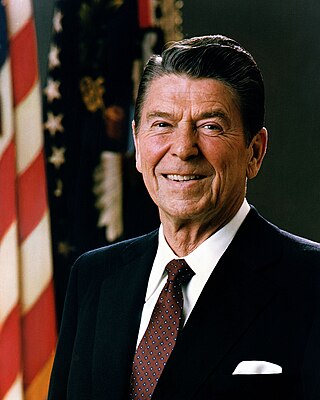
The National Archives and Records Administration (NARA) is an independent agency of the United States government within the executive branch, charged with the preservation and documentation of government and historical records. It is also tasked with increasing public access to those documents that make up the National Archives. NARA is officially responsible for maintaining and publishing the legally authentic and authoritative copies of acts of Congress, presidential directives, and federal regulations. NARA also transmits votes of the Electoral College to Congress. It also examines Electoral College and constitutional amendment ratification documents for prima facie legal sufficiency and an authenticating signature.

Classified information is material that a government body deems to be sensitive information that must be protected. Access is restricted by law or regulation to particular groups of people with the necessary security clearance and need to know. Mishandling of the material can incur criminal penalties.
A security clearance is a status granted to individuals allowing them access to classified information or to restricted areas, after completion of a thorough background check. The term "security clearance" is also sometimes used in private organizations that have a formal process to vet employees for access to sensitive information. A clearance by itself is normally not sufficient to gain access; the organization must also determine that the cleared individual needs to know specific information. No individual is supposed to be granted automatic access to classified information solely because of rank, position, or a security clearance.

The Freedom of Information Act, 5 U.S.C. § 552, is the United States federal freedom of information law that requires the full or partial disclosure of previously unreleased or uncirculated information and documents controlled by the U.S. government upon request. The act defines agency records subject to disclosure, outlines mandatory disclosure procedures, and includes nine exemptions that define categories of information not subject to disclosure. The act was intended to make U.S. government agencies' functions more transparent so that the American public could more easily identify problems in government functioning and put pressure on Congress, agency officials, and the president to address them. The FOIA has been changed repeatedly by both the legislative and executive branches.

Declassification is the process of ceasing a protective classification, often under the principle of freedom of information. Procedures for declassification vary by country. Papers may be withheld without being classified as secret, and eventually made available.

The Puzzle Palace is a book written by James Bamford and published in 1982. It is the first major, popular work devoted entirely to the history and workings of the National Security Agency (NSA), a United States intelligence organization. The title refers to a nickname for the NSA, which is headquartered in Fort Meade, Maryland. In addition to describing the role of the NSA and explaining how it was organized, the book exposed details of a massive eavesdropping operation called Operation Shamrock. According to security expert Bruce Schneier, the book was popular within the NSA itself, as "the agency's secrecy prevents its employees from knowing much about their own history".
Executive Order 12958 created new standards for the process of identifying and protecting classified information, and led to an unprecedented effort to declassify millions of pages from the U.S. diplomatic and national security history. In 1995, United States President Bill Clinton signed this Executive Order.

The National Security Archive is a 501(c)(3) non-governmental, non-profit research and archival institution located on the campus of the George Washington University in Washington, D.C. Founded in 1985 to check rising government secrecy. The National Security Archive is an investigative journalism center, open government advocate, international affairs research institute, and the largest repository of declassified U.S. documents outside the federal government. The National Security Archive has spurred the declassification of more than 15 million pages of government documents by being the leading non-profit user of the U.S. Freedom of Information Act (FOIA), filing a total of more than 70,000 FOIA and declassification requests in its over 35+ years of history.

Executive Order 13292 was an executive order issued by United States President George W. Bush on March 25, 2003, entitled "Further Amendment to Executive Order 12958, as Amended, Classified National Security Information." The Executive Order modified the manner in which sensitive information was handled at the time as set out by President Bill Clinton's 1995 executive order.

The Information Security Oversight Office (ISOO) is responsible to the President for policy and oversight of the government-wide security classification system and the National Industrial Security Program in the United States. The ISOO is a component of the National Archives and Records Administration (NARA) and receives policy and program guidance from the National Security Council (NSC).

Executive Order 12333, signed on December 4, 1981 by U.S. President Ronald Reagan, was an executive order intended to extend powers and responsibilities of U.S. intelligence agencies and direct the leaders of U.S. federal agencies to co-operate fully with CIA requests for information. This executive order was titled United States Intelligence Activities.
The United States government classification system is established under Executive Order 13526, the latest in a long series of executive orders on the topic of classified information beginning in 1951. Issued by President Barack Obama in 2009, Executive Order 13526 replaced earlier executive orders on the topic and modified the regulations codified to 32 C.F.R. 2001. It lays out the system of classification, declassification, and handling of national security information generated by the U.S. government and its employees and contractors, as well as information received from other governments.
Special access programs (SAPs) in the U.S. Federal Government are security protocols that provide highly classified information with safeguards and access restrictions that exceed those for regular (collateral) classified information. SAPs can range from black projects to routine but especially-sensitive operations, such as COMSEC maintenance or presidential transportation support. In addition to collateral controls, a SAP may impose more stringent investigative or adjudicative requirements, specialized nondisclosure agreements, special terminology or markings, exclusion from standard contract investigations (carve-outs), and centralized billet systems. Within the Department of Defense, SAP is better known as "SAR" by the mandatory Special Access Required (SAR) markings.
The withdrawal of previously declassified U.S. federal records is a process in which agencies can remove records from public access that they believe were incorrectly declassified and made available to the public at the National Archives and Records Administration. The process is often referred to as "reclassification," but because the records were never properly declassified and remained classified even when made publicly available, they are not re-classified.

The Presidential Records Act (PRA) of 1978, 44 U.S.C. §§ 2201–2209, is an Act of the United States Congress governing the official records of Presidents and Vice Presidents created or received after January 20, 1981, and mandating the preservation of all presidential records. Enacted November 4, 1978, the PRA changed the legal ownership of the President's official records from private to public, and established a new statutory structure under which Presidents must manage their records. The PRA was amended in 2014, to include the prohibition of sending electronic records through non-official accounts unless an official account is copied on the transmission, or a copy is forwarded to an official account shortly after creation.
The Interagency Security Classification Appeals Panel, or "ISCAP", provides the public and users of the classification system with a forum for further review of classification decisions. ISCAP states in order to foster a well-informed public while simultaneously protecting national security interests, checks and balances are needed over the classification system. This requires that some of the work of the U.S. Government be done outside the purview of its citizenry.
The Public Interest Declassification Board (PIDB) is an advisory committee established by the United States Congress with the official mandate of promoting the fullest possible public access to a thorough, accurate, and reliable documentary record of significant U.S. national security decisions and activities. The Board is composed of nine individuals: five appointed by the President of the United States and one each appointed by the Speaker of the House, House Minority Leader, Senate Majority Leader, and Senate Minority Leader. Appointees must be U.S. citizens preeminent in the fields of history, national security, foreign policy, intelligence policy, social science, law, or archives.
The Joint Staff Information Management Division (IMD) is one of two divisions which make up the Joint Staff Secretariat (SJS) of the United States Joint Chiefs of Staff currently located in the Pentagon in Arlington, Virginia (USA). The other division is called Actions Division (AD) which manages the daily workflow of the staff.

The Classified Information Procedures Act or CIPA is codified as the third appendix to Title 18 of the U.S. Code, the title concerning crimes and criminal procedures. The U.S. Code citation is 18 U.S.C. App. III. Sections 1-16.








